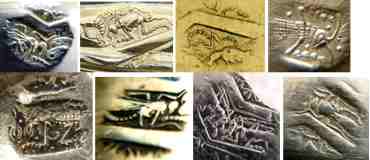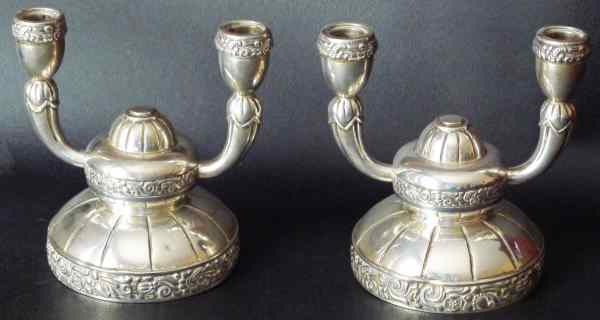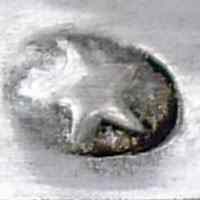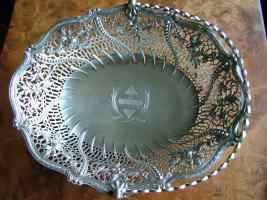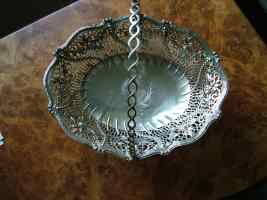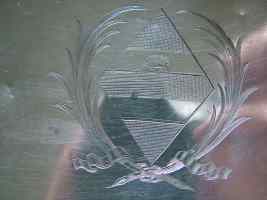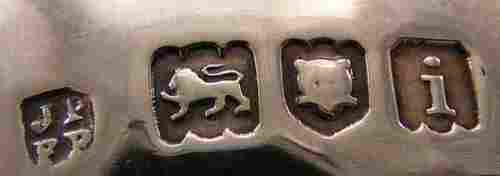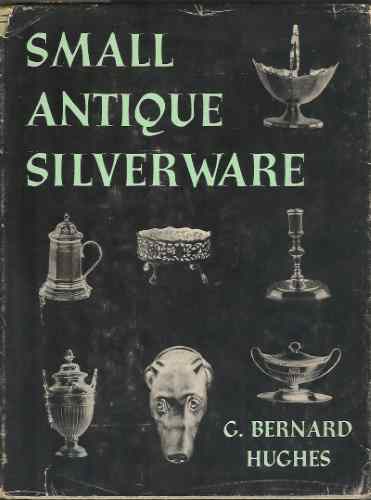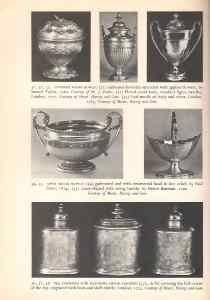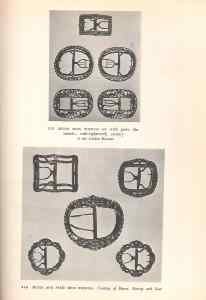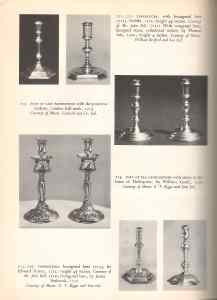 newsletter
# 137 October 2015
newsletter
# 137 October 2015www.ASCASonline.org SITE MAP
email: silverassociation@yahoo.it
YOUR GUIDE TO OCTOBER NEWSLETTER:
articles
new
members
members' window
|
top page - page map |
Mail to ASCAS: e-mail silverassociation@yahoo.it
Ludo D' Haese writes:
...In the attachment you will find some pictures of a pair of
Spanish candlesticks with three marks.
I know they are Spanish and after 1934 (the star). Can you, or
any ASCAS member tell me some more about Carreras en the other
mark ( ME with in the middle a vase)? Is there a book on 19th
and 20th century Spanish silver?
Many thanks.
Ludo D' Haese
Mike Jeanes writes:
...I am wondering if you can help me with a recent purchase, as
there are things I do not understand about it.
The item is a silver cake basket as photos attached, which I
recently purchased from a seller in France on eBay.
You will see the normal UK hallmarks for 1775 and the makers
mark of W.P (William Plummer), who is well known for his pierced
silver work.
However in addition there are two French (Paris) hallmarks of
Minerva which would have been applied after 1838 if I understand
correctly.
My problem is that I assume such marks would only be applied to
silver being purchased for sale in France, rather than silver
brought across from the UK by someone emigrating to France. If
this is right, then why would a silver dealer purchase a second
hand item of UK silver for sale in France? After all, France has
an excellent tradition of silver manufacture itself.
You can clearly see from the mark on the base that the mark has
slightly damaged the armorial shield on the inside, so clearly
the armorial was already in place when the French mark was
applied. Why would anyone of the time want a piece of silver
bearing someone else's armorials?
Also, why would two marks be required on the same body of silver?
There are also no marks, UK or French on the handle, which I
find rather odd.
It is interesting that the shield is that of a lady (or possibly
a clergyman) being a lozenge shape, rather than that of a
gentleman, but that is irrelevant to my query.
Any information you can supply would be very much appreciated.
Regards,
Mike Jeanes
"A PAGE per MONTH"
In this column we presents a page obtained from makers'
brochures, books, auction catalogs, advertising or whatever
other printed paper, related to silver, that may be of interest
for ASCAS members.
The images will be published at a "low resolution" level and for
private and personal use only.
This column is published under the kind permission of Giorgio
Busetto's website
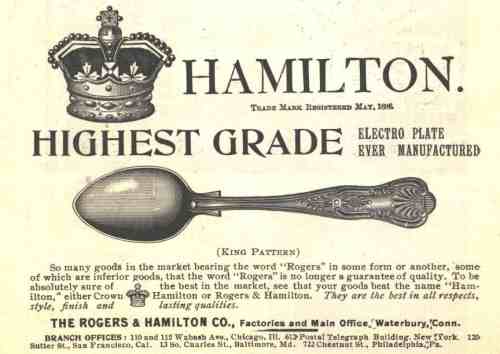
|
This month ASCAS presents an 1896 advertisement of:ROGERS & HAMILTONWaterbury (CT)The firm was founded in 1886 taking over the
spoon business of Holmes, Booth & Haydens. The
president was Charles Alfred Hamilton who had
travelled for Rogers & Bros for some years. William
H. Rogers, secretary and stakeholder, wasn't a
silversmith and undoubtedly participated to the
business to add "Rogers" to the company name.
|
"A WORD per MONTH"
In this column we present an abstract from a page of the "What is? Silver Dictionary"courtesy of
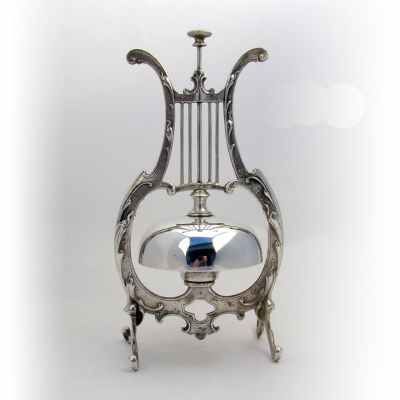
|
BELLBell is a hollow metallic object that vibrates and emits a musical note when struck.The main bells made in silver are: - a bell in the form of an inverted cup with a vertical handle and a clapper inside. The handle is usually baluster-shaped with a ball finial. Sometimes they have the shape of a ring or of a human figure. Smaller bells were the central unit of an inkstand but, being a separate piece, often they have survived apart from their inkstand Table and inkstand bells were used to call a servant to do an errand..... more |
"A SILVERSMITH per MONTH"
In this column
we present marks, information and history of silversmiths and
silver manufacturers.
This column is published under the kind permission of Giorgio
Busetto's website

PAIRPOINT BROTHERS, SILVERSMITHS IN LONDONThe firm was founded in 1848
by Edward James Pairpoint. The original address was 44
Whitcomb Street, Leicester Square but the firm soon
moved to 16 Litchfield Street and later to 44 Greek
Street.
|
"A BOOK ON MY SHELF"
In this column we present books, new
or ancient, dealing with silver in all its aspects (history,
marks, oddities...). This isn't a "book review" but only a fair
presentation of some useful "tools" that anyone may have in the
shelf of his bookcase.
ASCAS members are invited to contribute to this column
(click to enlarge images)
In the "book on my shelf" of this month ASCAS presents:

Custom Search
Closing our OCTOBER 2015 edition of ASCAS Newsletter I hope
you have appreciated its content.
Your comments, suggestions and advice will be of great help.
My thanks to Ludo D' Haese, Mike Jeanes and Robert Massart for
their precious contributions.
Giorgio Busetto
Secretary
DISCLAIMER AND PRIVACY POLICYASCAS is a community of people having a common
interest in antique silver.
|
